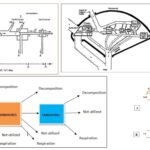General 11 Views 1 Answers
Editorial TeamLv 9February 7, 2025
how CHD diesease occurs
how CHD diesease occurs
Please login to save the post
Please login to submit an answer.
Editorial TeamLv 9May 15, 2025
Coronary heart disease (CHD), also called coronary artery disease (CAD) or ischemic heart disease, most commonly develops due to a process known as atherosclerosis. This process occurs over many years and involves several interrelated steps:
- Endothelial Injury and Dysfunction:
The inner lining (endothelium) of the coronary arteries can become damaged by factors such as high blood pressure, smoking, high levels of LDL (bad) cholesterol, diabetes, and inflammation. Once injured, the endothelium becomes more permeable, allowing circulating low‑density lipoprotein (LDL) particles to penetrate into the arterial wall. - LDL Infiltration and Oxidation:
When LDL particles enter the intima (the innermost layer of the arterial wall), they can become oxidized by free radicals. Oxidized LDL is particularly harmful because it triggers an inflammatory response. - Inflammation and Foam Cell Formation:
The oxidized LDL attracts circulating immune cells—especially monocytes—which migrate into the arterial wall. These monocytes transform into macrophages that ingest the oxidized LDL, becoming lipid-laden “foam cells.” Accumulation of foam cells forms the early fatty streaks that are the precursors of more advanced lesions. - Plaque Development:
As the process continues, smooth muscle cells migrate from the media (the middle layer of the artery) into the intima. They proliferate and produce collagen and other extracellular matrix proteins that form a fibrous cap over the developing plaque (the atheroma). This plaque is a mix of lipids (cholesterol), inflammatory cells, smooth muscle cells, and connective tissue. In many people, the artery initially expands (a process called compensatory enlargement) so that the lumen (the open channel for blood) remains open despite plaque buildup. - Plaque Rupture and Thrombosis:
Over time, if the fibrous cap becomes thin or unstable due to ongoing inflammation, it can rupture. When a plaque ruptures, the thrombogenic (clot-promoting) materials inside the plaque are exposed to the bloodstream. This exposure triggers platelet adhesion and activation of the coagulation cascade, resulting in the formation of a blood clot (thrombus). A large clot can acutely block the coronary artery, cutting off blood flow and causing myocardial ischemia (a shortage of oxygen to the heart muscle). If blood flow isn’t quickly restored, the affected heart tissue can die, leading to a heart attack (myocardial infarction).
0
0 likes
- Share on Facebook
- Share on Twitter
- Share on LinkedIn
0 found this helpful out of 0 votes
Helpful: 0%
Helpful: 0%
Was this page helpful?




